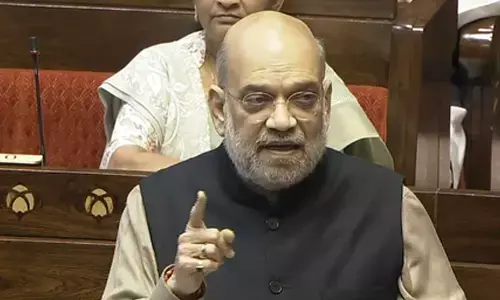'Asymptomatic, young & healthy, may not surface in contact tracing, testing'

As the number of confirmed coronavirus cases in the country jump past 17,000 with 543 deaths, a worry associated with the spread of viral infection is emerging - the asymptomatic cases or people who do not show symptoms of the infection may not be identified through contact tracing and tests.
New Delhi: As the number of confirmed coronavirus cases in the country jump past 17,000 with 543 deaths, a worry associated with the spread of viral infection is emerging - the asymptomatic cases or people who do not show symptoms of the infection may not be identified through contact tracing and tests.
Speaking to IANS, Prof. K. Srinath Reddy, President, Public Health Foundation of India (PHFI) said, "At the community level, the truly asymptomatic positives can become spreaders at least for a short period. Usually they are young and healthy. We cannot cast a net in the ocean of the general population to catch all of them. Contact tracing and testing helps but may still miss some asymptomatic positives."
He insisted that asymptomatic cases can be true positive or false positive on initial testing. "If repeat antigen testing and later antibody testing also sequentially indicate viral exposure and immune response with recovery, a true positive label becomes very strongly evidence-based. This clarifies the position for the individual," he added.
Indian Council of Medical Research (ICMR) has consistently maintained that it is not possible to test everybody. The ICMR said in India, there are 24 tests for one positive and out of these 23 tests are negative, but it still conducts tests on them whereas in Japan, 11.7 persons are tested, to detect one positive case, which is highest in foreign countries.
"In Italy, 6.7 people are tested to find one positive case, in the US its 5.3 and in the UK its 3.4. Our population is over 130 crore but everyone is not vulnerable," said the ICMR.
Prof. Reddy insisted that is why social distancing, personal hygiene and special precautions to protect the elderly and persons with co-morbidities must continue long after the lockdown is lifted.
Dr Manoj Goel, Director, Pulmonology, Fortis Memorial Research Institute said the reason for asymptomatic patients is that initially the infection sets in the throat and nasopharynx where the virus multiplies and virus load increases. During this period the patient does not have any symptoms as the virus is multiplying but at the same time this person is able to pass on the infection to others.
"Infectivity starts on an average 4 days before the onset of the symptoms and peaks just on the day the patient gets the first symptom. During this period the patient cannot be identified till his test is done. The only way to identify these patients is to do mass screening of individuals who are living in the hot spot zones and high risk clusters and then this can be taken further to mass screening at a larger scale," said Dr Goel.
Earlier, during the month in a press conference, Lav Agarwal, Joint Secretary, Health Ministry, had said "We are actually dealing with a very huge challenge along with the rest of the world. In this particular infectious disease, not only people who are symptomatic, but even asymptomatic persons as a carrier may pass on the infection."
The Health Ministry was responding to a situation in which a patient had gone to a hospital for some other disease, got in touch with medical professionals and healthcare staff and ended up infecting them with COVID-19. Later, it was realised that the patient was a carrier of the coronavirus infection. It was first recognised in China in January when it was not known what the trend was.







